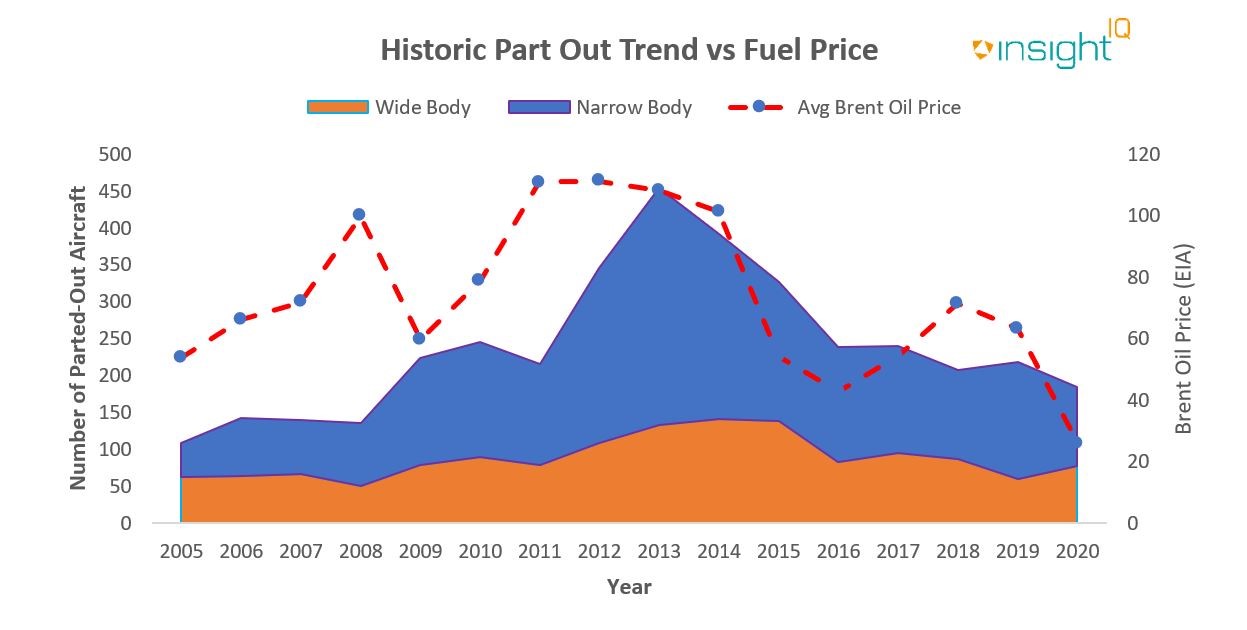11/12/2020
An aircraft or engine approaching its operational twilight years tends to require closer condition monitoring and increased maintenance investment. For many years, one option lessors and operators have used to achieve a good return on their asset is to part out the aircraft or engine for feedstock or to sell them into the aftermarket. Engines with little green time remaining are typically the best option for teardown.

Analysis and data from IBA's data platform InsightIQ illustrates the number of aircraft part outs taking place, broken down by widebodies and narrowbodies, in relation to the prevailing fuel price. It's clear to see narrowbody and widebody markets saw a sharp increase from 2005 as fuel prices began to rise. Historically, higher fuel prices have driven older and less efficient aircraft out of operation in favour of newer, more fuel-efficient options. Furthermore, from an MRO perspective, parts from a salvaged engine are significantly cheaper than buying new parts which helps to reduce the cost of maintenance events.
From 2014 onwards, the market experienced both a major reduction in fuel price along with strong growth in passenger demand. This led to many expected part out and retirement events being delayed as operators sought to keep aircraft flying as long as possible. For example, the grounding of the 737 MAX resulted in many parked 737 Classic aircraft returning to service for far longer than would have been expected.
Covid-19 is likely to reverse this trend somewhat rapidly but so far in 2020 the number of part outs continues to be low. The lack of activity is largely because of the massive decline in utilisation and consequent maintenance expenditure which, in turn, has a direct impact on demand for used serviceable material that the parting out of these aircraft would supply. In the short term, with most of the aftermarket supply chain and operators focusing on cash management, parting out makes little sense.
Long term, IBA expects the downturn to accelerate the retirement of more engines, particularly mature narrowbody engines. There's surprisingly strong demand for mature widebody engines to support the likes of the 767 in the freighter market but some engines, such as those on the A380, are likely to see very little part out demand.
When significant recovery activity begins, the MROs' ability to ramp up capacity to service the engine shop visits that were on hold or deferred during Covid-19 will be tested, especially since their manpower's now reduced. The likely outcome if the challenges prevent demand being met is an increase in typical turnaround times of 45 days. This scenario, coupled with operators' cash management strategies to defer large maintenance expenditure, could mean a spike in lease demand for green time engines.
If you have any further questions please get in touch: Denesz Thiyagarajan
IBA's InsightIQ analysis platform flexibly illustrates multiple asset, fleet and market positions, actual and potential, to inform client choices and identify acquisition opportunities. Immediate access to crucial aircraft, engine, lease rate and fleet data eases appreciation of historic and future aircraft concentrations and operator profiles.